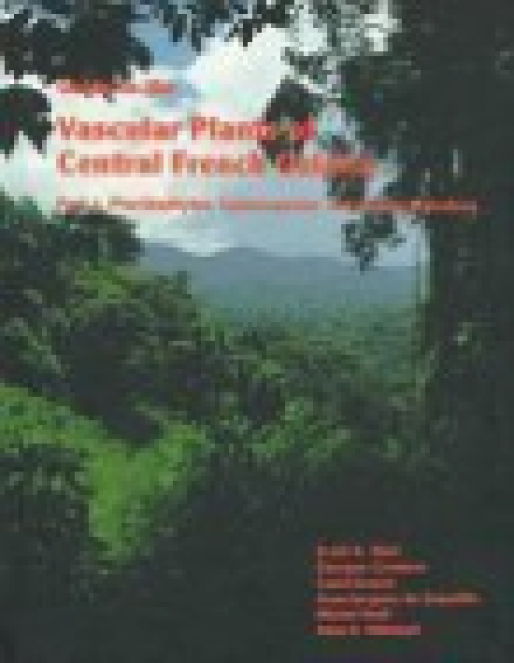 Guide to the vascular plants of Central French Guiana
Guide to the vascular plants of Central French Guiana
Scott A. Mori, Georges Cremers, Carol A. Gracie, Jean-Jacques de Granville, Scott V. Heald, Michel Hoff, John D. Mitchell
Part 1. « Pteridophytes, Gymnospermes, and Monocotyledons» The New York Botanical Garden – 1997, 422 pages, ISBN 0-89327-398-8, 50 $
In this installment, 12 species of lycopods (Lycophyta), 182 species of ferns (Pterophyta), the one gymnosperm (Gnetophyta), and the 426 species in 27 families of monocotyledons (Magnoliophyta class Lililopsida) native or naturalized to central French Guiana are keyed and described. An annotated and well-illustrated list of species with outstanding ecological or morphological features of use in plant identification is included. Three maps, 165 line illustrations, 240 color photographs, and a glossary providing definitions of technical terms used to describe plants in northeastern South America facilitate the use of this guide.
Part 2. « Dicotyledons »The New York Botanical Garden – 2002, 944 pages, ISBN 0-89327-445-3, 150 $
In this second part of the Guide, 80 botanists have contributed keys and descriptions to 1483 species in 112 families of dicotyledons native to or naturalized in the area. To facilitate the use of the guide, it has been superbly illustrated with 386 line drawings and nearly 700 color photographs. An annotated list of species highlighting their notable ecological or morphological features complements the list of identification aids presented in Part 1. Common names are shown with their taxonomic counterparts. A supplement to Part 1 contains a section with taxa added since 1997, corrections to the first part, and a list of new terms that expand the glossary. This guide should be useful in the identification of families and genera of vascular plants throughout the forests of lowland northeastern South America.

